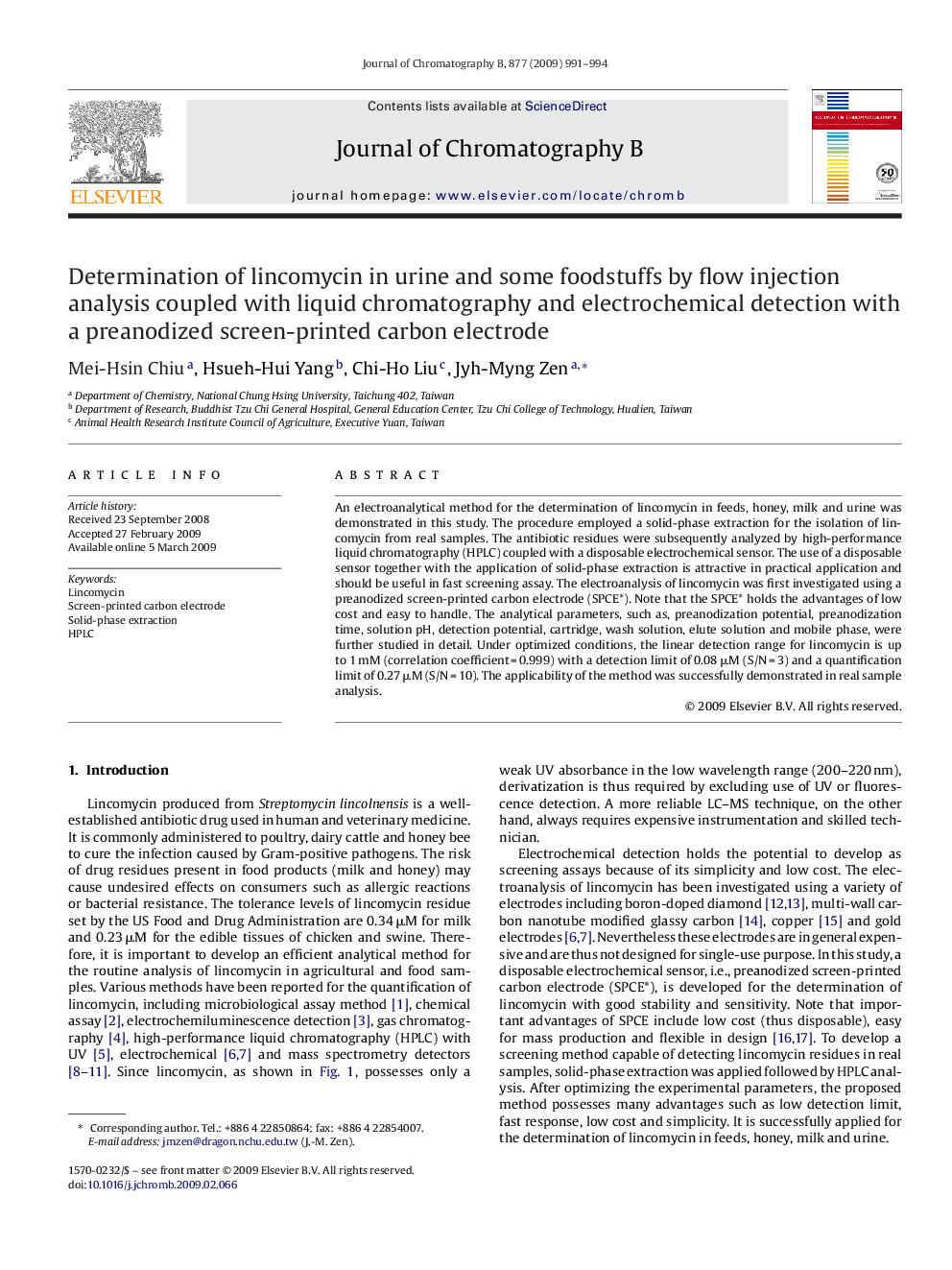| Article ID | Journal | Published Year | Pages | File Type |
|---|---|---|---|---|
| 1216355 | Journal of Chromatography B | 2009 | 4 Pages |
An electroanalytical method for the determination of lincomycin in feeds, honey, milk and urine was demonstrated in this study. The procedure employed a solid-phase extraction for the isolation of lincomycin from real samples. The antibiotic residues were subsequently analyzed by high-performance liquid chromatography (HPLC) coupled with a disposable electrochemical sensor. The use of a disposable sensor together with the application of solid-phase extraction is attractive in practical application and should be useful in fast screening assay. The electroanalysis of lincomycin was first investigated using a preanodized screen-printed carbon electrode (SPCE*). Note that the SPCE* holds the advantages of low cost and easy to handle. The analytical parameters, such as, preanodization potential, preanodization time, solution pH, detection potential, cartridge, wash solution, elute solution and mobile phase, were further studied in detail. Under optimized conditions, the linear detection range for lincomycin is up to 1 mM (correlation coefficient = 0.999) with a detection limit of 0.08 μM (S/N = 3) and a quantification limit of 0.27 μM (S/N = 10). The applicability of the method was successfully demonstrated in real sample analysis.
